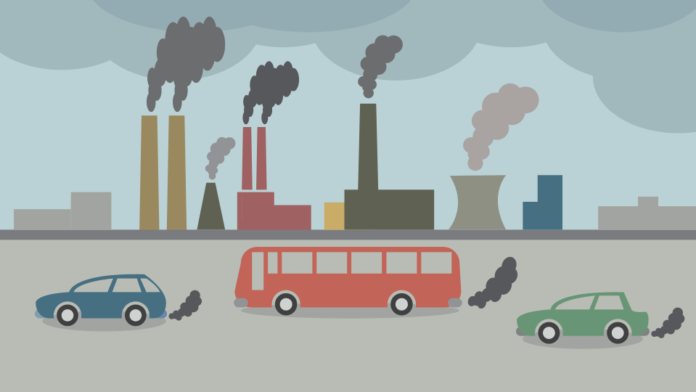What Is Air Pollution?
Air pollution refers to the release of pollutants into the air—pollutants that are detrimental to human health and the planet as a whole. According to the World Health Organization (WHO), each year air pollution is responsible for nearly seven million deaths around the globe. Nine out of ten human beings currently breathe air that exceeds the WHO’s guideline limits for pollutants, with those living in low- and middle-income countries suffering the most. In the United States, the Clean Air Act, established in 1970, authorizes the U.S. Environmental Protection Agency (EPA) to safeguard public health by regulating the emissions of these harmful air pollutants.
Air pollution comes from both natural and man-made sources:
Natural sources include dust storms, wildfires and volcanic eruptions; however these events are usually localized and do not affect entire regions or countries.
Man-made sources of air pollution include industrial activities such as manufacturing or processing products, heating homes with fossil fuels, burning garbage or agricultural waste; transportation activities like driving cars or trucks; agriculture operations such as raising livestock or growing crops; municipal waste incineration plants; residential heating oil furnaces, open burning of garbage, backyard grills, backyard fire pits, fireworks displays.
What Causes Air Pollution?
In this blog we disccAir pollution is a serious problem — one that affects everyone. “Most air pollution comes from energy use and production,” says John Walke, director of the Clean Air Project, part of the Climate and Clean Energy program at NRDC. “Burning fossil fuels releases gases and chemicals into the air.” And in an especially destructive feedback loop, air pollution not only contributes to climate change but is also exacerbated by it. “Air pollution in the form of carbon dioxide and methane raises the earth’s temperature,” Walke says.
“Another type of air pollution, smog, is then worsened by that increased heat, forming when the weather is warmer and there’s more ultraviolet radiation.” Climate change also increases the production of allergenic air pollutants, including mold (thanks to damp conditions caused by extreme weather and increased flooding) and pollen (due to a longer pollen season).
In addition to these, the burning of wood, as well as charcoal, also results in air pollution. Besides this, noxious gases like carbon monoxide, nitrogen oxides, and sulfur dioxide are also a few causes of air pollution.
Hazardous air pollutants
Air pollution is a serious threat to human health. It can cause respiratory problems like asthma and lung cancer, and can also lead to heart disease and stroke. In fact, air pollution was responsible for six percent of all deaths in the United States in 2013, according to the American Lung Association (ALA).
A number of air pollutants pose severe health risks and can sometimes be fatal even in small amounts. Almost 200 of them are regulated by law; some of the most common are mercury, lead, dioxins, and benzene. “These are also most often emitted during gas or coal combustion, incinerating, or—in the case of benzene—found in gasoline,” Walke says.
Benzene, classified as a carcinogen by the EPA, can cause eye, skin, and lung irritation in the short term and blood disorders in the long term. Dioxins, more typically found in food but also present in small amounts in the air, can affect the liver in the short term and harm the immune, nervous, and endocrine systems as well as reproductive functions. Mercury attacks the central nervous system. In large amounts, lead can damage children’s brains and kidneys.
Greenhouse gases
Greenhouse gases are a type of pollutant that stays in the atmosphere for a long time. They trap heat and cause temperatures to rise, which can lead to climate change.
Greenhouse gases are mainly carbon dioxide (CO2), methane (CH4), nitrous oxide (N2O), perfluorocarbons, hydrofluorocarbons, and sulfur hexafluoride (SF6).
In 2018 carbon dioxide accounted for 81 percent of the country’s total greenhouse gas emissions, and methane made up 10 percent. “Carbon dioxide comes from combusting fossil fuels, and methane comes from natural and industrial sources, including large amounts that are released during oil and gas drilling,” Walke says. “We emit far larger amounts of carbon dioxide, but methane is significantly more potent, so it’s also very destructive.
Conclusion
If you want to keep your indoor space clean and free from polluted air, make sure that you purchase a KENT best air purifier in India!. The air purifier might support removing the impurities and contaminants from the air and making the surroundings free from odors and gasses.
